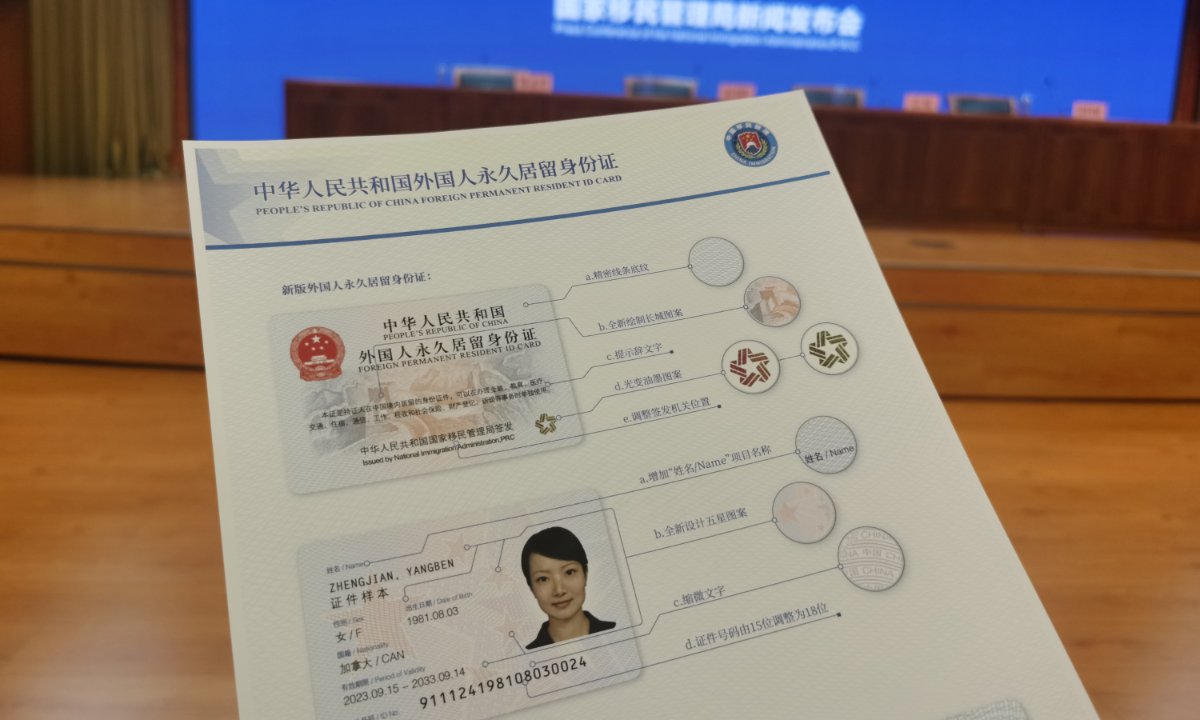Introduction
China’s continual strive to upgrade its infrastructure and identity credentials has manifested in the latest version of the Permanent Resident Card for foreigners. Historically known as the “Chinese Green Card,” it is evolving. The card, which experts have now colloquially dubbed the “Five-Star Card,” reflects China’s national emblem and a deep sense of cultural identity. This change will officially be in effect from December 1, as announced at a recent press conference.
Unveiling the New Design
The anticipation-filled press conference showcased the redesigned permanent resident card. The card is now enriched with traditional Chinese elements. Dominating its design is an impressive representation of the Great Wall. However, what stands out most prominently are the five stars, synonymous with the national emblem of China.
Rationale Behind the New Name
Experts directly involved in this significant overhaul explained the reasoning behind this shift in nomenclature. Permanent resident cards worldwide often have popular colloquial names. The choice of “Five-Star Card” is in keeping with this global trend. The revamped card embodies strong Chinese traits, which makes it easily recognizable both within and outside China. Furthermore, this new name offers convenience in daily conversations.
Comparing it to international counterparts, the US has its “Green Card” named after its green hue. Similarly, Canada’s card, adorned with the national maple leaf symbol, is fondly referred to as the “Maple Leaf Card.”
There was, however, a need to correct a misnomer. Labeling China’s card as the “Chinese Green Card” was a misfit since it lacked any resemblance to the US counterpart. A source familiar with the process said, “The term was far from accurate. Now, by introducing the five-star element, we have not only given it a distinctive identity but also ensured it mirrors Chinese ethos.”
Purpose and Functionality of the Card
The permanent resident card isn’t merely symbolic. Issued by the National Immigration Administration, this card is granted to foreigners who achieve permanent residency in China. It’s a potent identification tool. With this card, one doesn’t need a foreign passport for activities like registering at accommodations or purchasing tickets for various modes of transport.
Technological Upgrades and Enhanced Features
Beyond its visual appeal, the card is fortified with state-of-the-art anti-counterfeiting technology. This technological advancement ensures information is stored securely, and application management services are more streamlined. With this upgrade, cardholders gain the capability to transact online for numerous personal tasks – from transportation and shopping to financial activities. This digital integration will notably simplify their daily activities in China.
Officials Speak on the Card’s Broader Implications
The unveiling wasn’t merely about a redesigned card; it was symbolic of China’s broader vision. Officials from the National Immigration Administration shed light on this perspective. They explained that the revised card is a strategic move. It’s an indication of China’s commitment to open up its borders and foster international collaboration.
The agenda is clear: To digitize and enhance the efficiency of immigration management services. This digital transformation aims to attract global talents to China. Whether it’s for work, academic pursuits, or settling down, China’s strategy is to ensure they have the best facilities and streamlined processes.
Future Endeavors & Transition Phase
Following this launch, the National Immigration Administration plans to join forces with allied departments. The collective focus will be on accelerating the transformation of information systems, facilities, and equipment across various sectors. The aim? To widen the card’s application and enhance user satisfaction.
It’s also worth noting that current cardholders aren’t left in the lurch. While the new version rolls out, existing cards will remain valid until their expiration. However, those eager to transition can apply for the “Five-Star Card.”
Conclusion
The metamorphosis of China’s Permanent Resident Card isn’t just a name change or design overhaul. It’s emblematic of China’s evolution and its intention to foster international collaborations. In this digital age, where identity and recognition play pivotal roles, the “Five-Star Card” is set to become an emblem of China’s international identity.
Read More:
